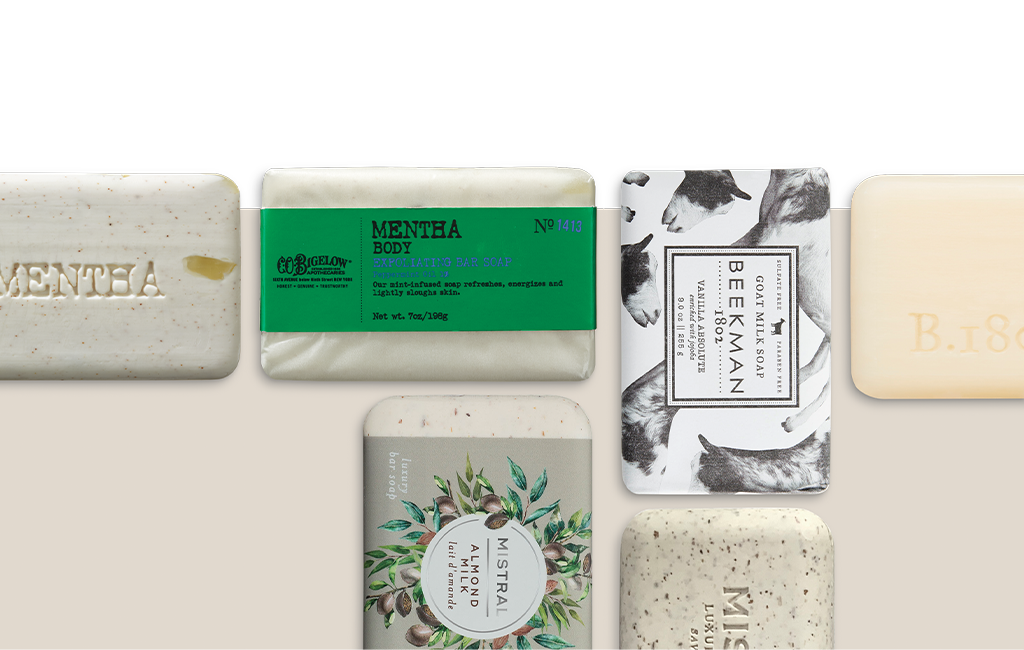For many of us, our preferred body wash is a sudsy gel squeezed out of a plastic bottle, but thanks to a recent rise in at-home self-care rituals and sustainability efforts, the basic bar of soap is making a big comeback.
The Comeback
The bar soaps we recall being stuck to our shower niche as kids left much to be desired: harsh ingredients stripped skin bone-dry, they’d crumble into pieces or they’d all share the same “soap” smell. However, today’s versions offer much more in the body-cleansing department, and as of late, people are taking notice. “There’s no doubt bar soaps have seen a new life during the pandemic,” says Ian Ginsberg, president of C.O. Bigelow in New York. “The shower gel generation is now starting to take a look at bar soap again. It’s not a huge wave, but we do see meaningful growth, and I think we’ll see even more.
Formula Facts
After testing many bars of soap for our Beauty Awards, we can confidently say not all are created equal. According to cosmetic formulator Stephen Alain Ko, bar soaps are made by reacting oils (like coconut and palm) and fats (tallow) with a strong alkali like lye. “Soaps foam and clean best at a high pH—between 8 and 11—which is much more alkaline than our skin, which is one reason they can be irritating and drying,” he explains. However, many bars we see at the store are in fact not soaps at all, but rather something called syndets— short for synthetic detergent. “Syndets are generally gentler on skin and can clean and foam at a lower pH, between 6 and 7,” Ko says. “They can also be combined with higher amounts of moisturizers and emollients like glycerin, oils and waxes.”
Moisture Boost
While the soap-making process hasn’t changed much in decades, Ginsberg says experience and technology have allowed C.O. Bigelow, as well as other brands, to incorporate more moisturizing and conditioning ingredients for more skin benefits than ever before. “The typical skinstripping formulas have been replaced by better, beautiful, luxurious versions that leave skin feeling fresh and conditioned rather than super dry.” Amy Stepanian, brand director for Dove, knows this concept well, as the Dove Beauty Bar was the first soapfree bar—it falls in the syndet category—to hit the U.S. in 1957. Now, an estimated 26 Beauty Bars are sold per second in the United States alone. “It uses unique gentle cleansers and one-fourth moisturizing cream, so as well as washing away dirt and germs, it’s gentle enough for daily cleansing of the face, body and hands for the whole family.”
Dr. Brent Ridge, cofounder of Beekman 1802, also believes in the bar soap buzz: The brand’s ultra-nourishing Goat Milk Soap launched 12 years ago, garnering a major cult following, and more than 15 million bars have been sold since. “What makes our soaps so special is the goat milk, which is very rich in lactic acid, vitamins and minerals, and has the same pH as human skin, so it doesn’t strip the acid mantle,” he explains. “It not only deeply nourishes, but also strengthens skin. Skin literally drinks it in.”
Eco Awareness
Unlike liquid body wash, bar soap is often wrapped in paper, which reduces plastic use—this point alone has convinced many environmental advocates to make the switch to solid cleansers over the years. “We are all becoming increasingly concerned with the environment,” says Ginsberg. “It had already begun, but the pandemic has been the great accelerator, causing us to reflect on the world, the environment and waste, and also to be more cost-conscious. Bar soaps make you feel like you’re being smarter about both, and some are pretty good.” Though Dove Beauty Bars are housed in cartons rather than paper, Stepanian says they “began the journey to become plastic-free last year with the start of a global carton transition, which removes the plastic laminate layer from the inside of the cartons.”





















